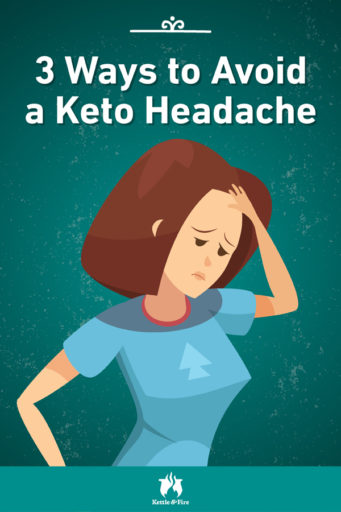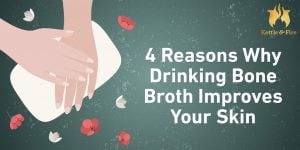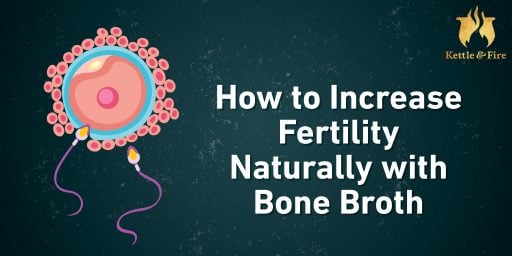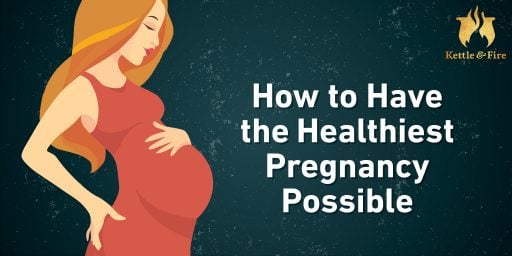3 Ways to Avoid a Keto Headache

So you’re about to embark on the ketogenic diet for the first time, and you’re hearing rumors about the keto flu: flu-like symptoms, brain fog, fatigue, and keto headaches. What’s all this about? Well, transitioning from the Standard American Diet (SAD) to the keto diet makes for a pretty dramatic shift. And sometimes it takes a while for your body to catch up.
While these side effects are pretty typical during the metabolic transition, they aren’t pleasant, so you’ll want to try to avoid or minimize them. You’ll want to understand why they happen physiologically, then take steps to ease the transition and make the keto flu and keto headache less likely to happen to you.
Transitioning to a Keto Lifestyle
The transition into the keto diet involves replacing the carbohydrates in your diet with fats and leafy vegetables. The simplest definition of keto is a high-fat, moderate protein, and low-carb diet. Ideally, your macronutrients should break down by calories in a ratio of roughly 12:3:1. Your fat calories should be twelve times as high as your carb calories. But what does that really mean in practice?
While the specifics for each individual depend on your goals, typically, carb intake is between 20 and 50 grams of net carbs per day – the equivalent of two to five slices of bread.
Net carbs are defined as the total carb count minus the fiber count. Fiber is indigestible and doesn’t technically add usable calories to your diet, so it doesn’t count toward your total. The Keto Diet App offers a pretty useful free calculator to help you determine your personal macro numbers based on your current status.
Because your body is probably used to consuming far more carbohydrates than what’s allowable on the keto diet, and because carbohydrates are your body and brain’s primary fuel source, the swap from carbs to fat can be a bit bumpy for some. You can’t always completely prevent a keto headache during your transition, as genetics do play a role, but if you take the right precautions, you can minimize the discomfort at the very least.
What Is a Keto Headache?
The keto headache is one of the many keto flu symptoms. Swapping carbs for fat is no small change, which is why the ketogenic diet is capable of facilitating some significant changes to your physiology. When your brain and muscles transition from burning glucose to burning ketones (byproducts of fat breakdown), you move into ketosis (fat-burning mode), and a few important things happen.
First, you can experience withdrawal symptoms similar to weaning off of caffeine or other addictive substances. If you’ve ever forgotten to drink your morning coffee or decided to quit smoking, you know exactly what we mean: you get a headache, brain fog, nausea, an achy body, sugar cravings, or feel irritable. This withdrawal is often referred to as the keto flu. And the keto headache is among the least pleasant symptoms.
Second, you begin shedding excess water weight. This one is important. The body stores carbohydrates as glycogen, which promotes water retention, so as your carb intake goes down, so too do your glycogen stores. This means that dehydration is pretty common during the transition, which can cause a pretty brutal headache all on its own (1).
Third, your body begins to decrease in insulin production. This is because insulin is required to process carbohydrates, and you’re barely eating any. When insulin levels decrease, your body begins to release sodium through the kidneys (2). Furthermore, your main magnesium and potassium sources (fruits, grains, starchy veggies) are off-limits on this high-fat diet. So all this draining of electrolytes from your system can create an electrolyte imbalance. If you’ve ever run a long distance race or done a multi-day hike, you know how it feels to sweat out these minerals, and a headache is among the first symptoms.
Fourth, your blood sugar could drop. Low blood glucose (low blood sugar) can sometimes result from a dramatic drop in high-carb foods, which can cause a severe headache, a feeling of lightheadedness, and sugar cravings. This one, if left unaddressed, can end up sabotaging your weight loss goals and causing you to quit the diet, so keeping your blood sugar levels steady is important.
How to Prevent or Reduce the Symptom of a Keto Headache
Now that you understand the cause of the keto headache, the next step is to do what you can to prevent the symptoms. Here are the three most important steps.
1. Stay Hydrated
Prevent dehydration-induced headaches by drinking enough water to replace what you shed in the first week. Set a goal of at least 70 to 100 ounces of water per day in the first week of your new diet, and be sure that part of your beverage intake includes additional electrolytes.
A natural way to do this is to add sea salt to coconut water. Just be sure to monitor your sugar as you do this, as coconut water does have some sugar in it. This will help solve the second and third challenge on the list above.
If you don’t like coconut water, focus on magnesium and potassium-rich foods to prevent the muscle cramping, fatigue, and headaches that can come from a loss of essential electrolytes (3). These foods include bone broth, avocado, and green, leafy vegetables. Just remember to cook the veggies in plenty of healthy fat, like ghee, coconut oil, or olive oil, and add a natural salt like sea salt or Himalayan salt to ensure that you’re getting a range of minerals.
2. Transition Slowly
The first week of your new keto diet is when these symptoms are most likely to pop up. Most people go through a massive pantry and fridge clean out when launching into such a specific plan, and attempt to go all the way to the extreme on day one.
Failing to slowly transition could result in the common symptoms we’ve laid out. A slow transition might not be necessary for everyone (some people have more metabolic flexibility than others), but if you’re concerned, we recommend a slow transition.
Rather than starting on your first day with an extremely low carbohydrate count, try reducing it one meal at a time. Start with a low-carb breakfast, and eat a sensible complex carbohydrate for the remaining two meals. The next day, try two low-carb meals, and the next, go for all three. Shoot for including 4 to 6 ounces of protein with every meal and snack, and really start upping fat.
3. Focus on High-Fat Foods
The main difference between a regular low-carb diet and the keto diet is the focus on high-fat foods. It doesn’t always feel natural to pour extra fat into the frying pan or to eat an entire avocado in one sitting, but this is the crux of the whole diet. It’s also the best way to reduce sugar cravings during the transition (4).
Most people who embark on the keto diet are doing so to burn fat and lose body weight. The transition to a high-fat diet should help you do so successfully and still have enough energy to keep going.
Don’t Push It at First
It’s tempting to make all the changes at once when you’re starting a new diet. We already mentioned making a slow dietary transition, but this applies to exercise as well. Exercise and daily activity is an important feature of every healthy lifestyle, but in the first week or two of your new diet plan, you want to take it slow and easy. Opt for walks, yoga, or other gentle movements that keep your blood flowing without an intense drain on your body. This will help you ease into burning ketones without dehydration and fatigue.
Wait for your body to optimize its new fuel source (ketones) before launching into a new CrossFit program, starting endurance training, or hitting the weights super hard. Not only will this make the exercise easier in the end, it will also make you more likely to stick with the diet long-term.
Pin for later:










